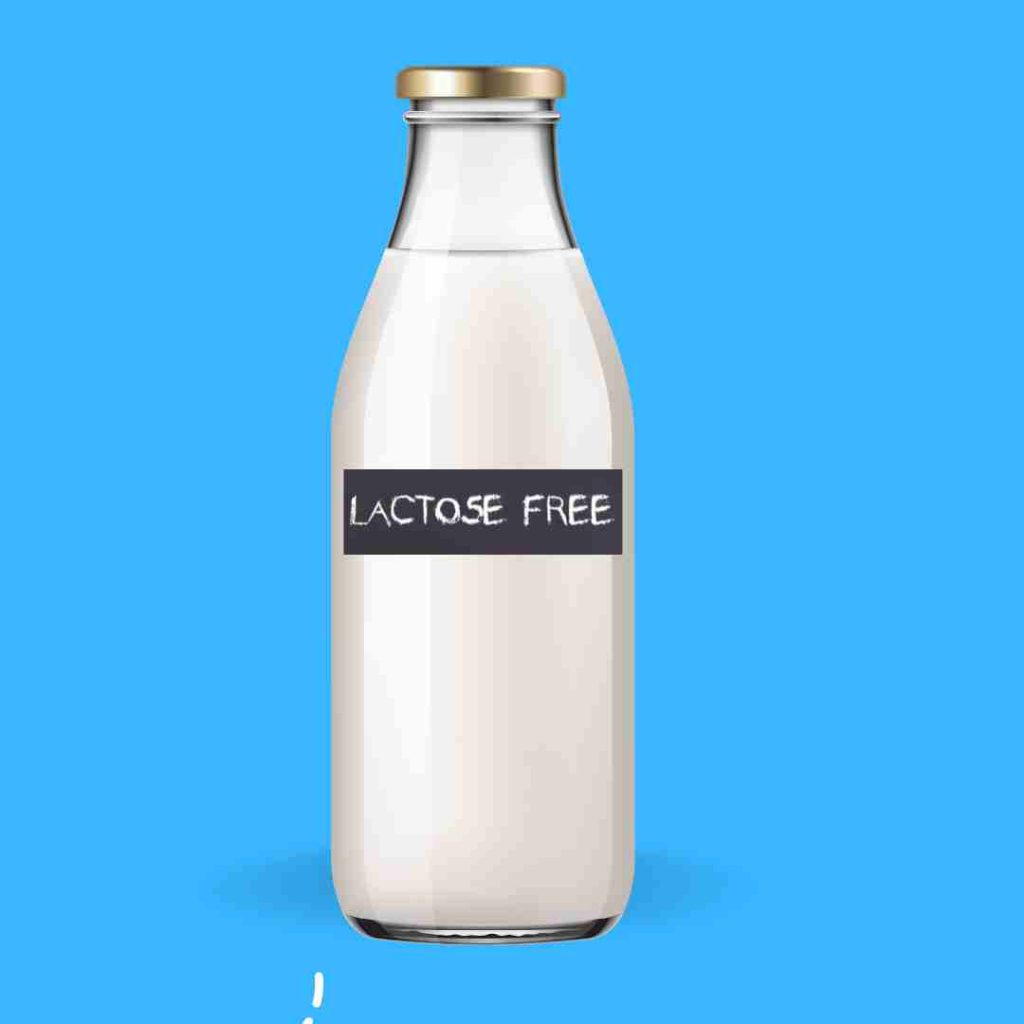
Lactose is a type of sugar found in all milk products. Lactose is a disaccharide composed of galactose and glucose linked by a β-1,4 glycosidic bond. The concentration of lactose varies depending on the type of milk, particularly among different animal species. For example, human breast milk contains approximately 7.0 g/100 ml of lactose, cow’s milk contains 4.7-5.0 g/100 ml, sheep’s milk contains 4.4-4.8 g/100 ml, goat’s milk contains 4.2-4.8 g/100 ml, and buffalo milk contains 4.8-5.0 g/100 ml. In plant-based milks, such as those made from nuts, rice, oats, and soy, lactose is absent (1).
For lactose to be absorbed by the human body, it must first be broken down into glucose and galactose. This process is catalyzed by lactase-phlorizin hydrolase, an enzyme found on the surface of the intestinal mucosa. Lactase activity begins on the mucosal surface of the intestine as early as the eighth week of gestation. This activity continues to increase and reaches its peak at birth. The ability to digest lactose is essential for a newborn’s growth and survival during breastfeeding (1).
As we age, the ability to digest lactose declines in direct proportion to the reduction in lactase enzyme activity. Consequently, lactose intolerance—a pathophysiological condition caused by insufficient lactase enzyme activity in the jejunum—develops. Approximately 75% of the global population is affected by lactose intolerance (2).
Lactase deficiency leads to impaired absorption of lactose in the intestinal tract, which can result in symptoms such as abdominal cramps, bloating, and watery, acidic stools, ultimately reducing the quality of life (1). The diagnosis of lactose intolerance is typically made clinically and, if necessary, confirmed with a lactose breath test. Patients with lactose intolerance must often follow a lifelong strategy of reducing lactose intake to improve their quality of life (3).
Some dairy products can be made lactose-free by removing the lactose, which is typically broken down into glucose and galactose during the manufacturing process (4). Lactose-free dairy products provide the essential nutrients found in regular dairy, such as calcium and vitamins, for individuals who are unable to digest lactose (4). Milk and dairy products labeled as low-lactose should contain no more than 1 g of lactose per 100 g of ready-to-eat food. While lactose-free foods are expected to be devoid of lactose, for analytical purposes, up to 10 mg of lactose per 100 g of product is permissible (2).
Lactose Content in Different Types of Milk (2)
| Milk Types | Lactose (g/100ml) |
| Skim Milk | 4.3-5.7 |
| Low Fat Milk | 3.7-5.5 |
| Lactose Hydrolyised Milk | 0.43-0.6 |
| Butter Milk | 3.6-5.0 |
| Chocolate Flavoured Milk | 4.1-4.9 |
| Cream | 0.1 |
| Whipping Cream | 2.8-3.0 |
| Gree (Cow Milk) | 0.0 |
| Yoghurt | 4.70-4.76 |
| Whey | 5.1 |
| Kumis | 5.5 |
In conclusion, lactose digestion plays a crucial role in the nutritional health of individuals, particularly in infants who rely on breast milk for growth and development. However, as we age, the ability to digest lactose often declines, leading to lactose intolerance, a condition that affects a significant portion of the global population. The symptoms of lactose intolerance can impact quality of life but can be managed through dietary adjustments, including the consumption of lactose-free or low-lactose dairy products.
Author Kubra Haktan
REFERENCES
- Catanzaro, R., Sciuto, M., & Marotta, F. (2021). Lactose intolerance: An update on its pathogenesis, diagnosis, and treatment. Nutrition Research, 23-34.
- Suri, S., Kumar, V., & etc., a. (2019). Considerations for development of lactose-free food. Journal of Nutrition & Intermediary Metabolism, 27-34.
- Vandenplas, Y. (2015). Lactose intolerance. Asia Pacific Journal of Clinical Nutrition, 9-13.
- Dekker, P. J., Koenders, D., & Bruins, a. M. (2019). Lactose-Free Dairy Products: Market Developments, Production, Nutrition and Health Benefits. MDPI.
